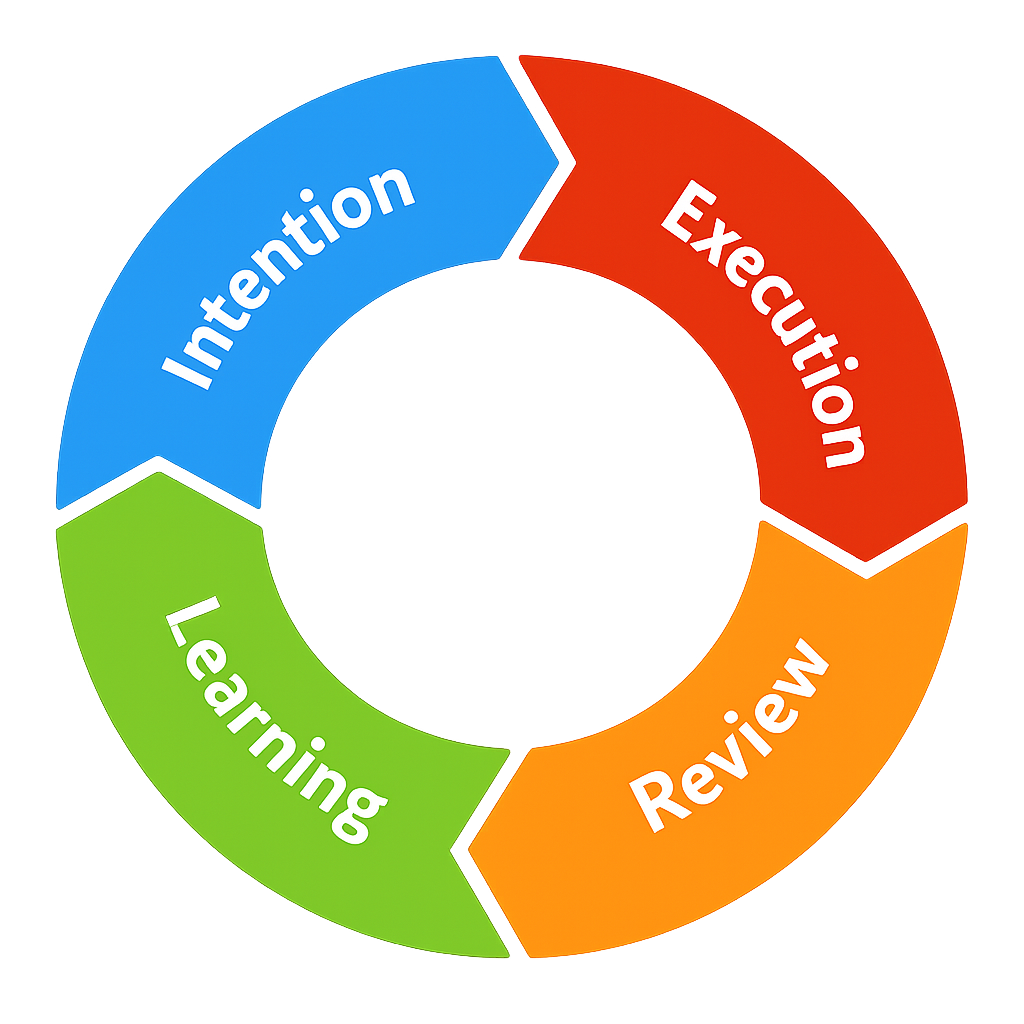Methodology Principles
- 1You Can't Outsource ResponsibilityAt the heart of Supervised Vibe Coding lies the principle that accountability for code quality, design decisions, and system integrity cannot be delegated to AI alone. While AI can handle routine tasks with proper oversight, true collaboration demands human judgment at critical decision points to ensure correctness, maintainability, and ethical compliance.
- 2Human Oversight over Unchecked AutomationEvery AI-generated change is subject to human review, with escalation protocols for complex or safety-critical code that requires deeper expertise.
- 3Quality & Accountability over Speed AloneAutomated testing, peer review, and traceable ownership ensure long-term maintainability outweighs ephemeral gains in delivery pace.
- 4Clear Guardrails over Ambiguous GuidanceCoding standards, architectural constraints, and CI/CD pipelines provide structure for AI collaboration and prevent drift from project objectives.
- 5Iterative Learning over One-Time DeliveryRuntime metrics, user feedback, and retrospective insights continuously improve the human-AI collaboration loop.
- 6Explicit Intent over Implicit AssumptionsEvery AI interaction begins with clearly articulated goals, constraints, and context to guide outputs toward desired outcomes.
Workflow Overview
A stepwise process for intent definition, AI-assisted drafting, structured review, quality assurance, and continuous improvement.

| Theme | Step | Description | Key Practices |
|---|---|---|---|
| Intention | 1. Define Intent | Articulate objectives, constraints, and context using structured templates before invoking AI | Use "Goal-Constraint-Context" format; specify success criteria |
| Execution | 2. AI-Assisted Drafting | Generate initial code, documentation, or designs with AI guidance | Prompt iteratively; maintain human creative direction |
| Review | 3. Structured Review | Apply human oversight with escalation paths for complex outputs | Use checklists; escalate safety-critical or unfamiliar code |
| Learning | 4. Quality Assurance | Enforce automated testing, linting, static analysis, and CI/CD checks | Include AI-specific tests for edge cases and hallucinations |
| Learning | 5. Continuous Improvement | Monitor production metrics and feed insights back into future AI sessions | Track AI accuracy; refine prompting strategies |
Intent Articulation Frameworks
To ensure consistent AI guidance, use a structured intent articulation framework. Below is one example—other frameworks may also be suitable.
Implementation Guidelines
For Teams New to AI-Assisted Development:
- Start with low-risk, non-critical code generation
- Establish clear review checklists and escalation procedures
- Build AI prompting skills gradually across the team
For Safety-Critical Systems:
- Require dual human review for all AI-generated code
- Implement additional automated testing for edge cases
- Maintain detailed audit logs of all AI interactions
For Legacy Codebases:
- Use AI primarily for documentation and test generation initially
- Establish clear boundaries for AI modifications to existing code
- Prioritize understanding over speed when working with unfamiliar systems
What Makes Supervised Vibe Coding Unique
Methodology Comparison
| Supervised Vibe Coding | Vibe Coding | Modern Traditional Coding |
|---|---|---|
| Human Oversight Mandatory, structured review at every step with escalation protocols; no code merges without human sign-off | Minimal Oversight AI outputs often merged with little or no human review; oversight is optional and inconsistent | Peer Review Manual QA and peer review by humans for all changes |
| Guardrails AI-aware standards, automated testing, and strict CI/CD enforcement | Loose or Absent Guardrails Inconsistent or missing standards for AI-generated work; testing is often skipped | Established Standards Well-defined standards and CI/CD for human contributors |
| Accountability Clear ownership and traceability for every change, with explicit AI-human collaboration tracking | Diffuse Responsibility Responsibility for errors is unclear; blame can be shifted between AI and humans | Direct Accountability Human authorship and responsibility for all code |
| Learning Loop Continuous improvement of human-AI collaboration, with feedback cycles and prompt refinement | Static Process Little to no follow-up on AI-generated solutions; process rarely evolves | Human Process Improvement Retrospectives and process tweaks driven by human experience |
| Intent Communication Structured templates and explicit goal articulation required for every AI task | Ad-hoc Prompting Informal, often vague prompts with minimal context | Requirements Documentation Formal requirements and planning documents |
| Speed Fast, but always gated by human review and quality checks | Maximum Speed Very fast, as AI outputs are merged quickly with little friction | Moderate Speed Slower, due to manual processes and thorough review |
| Stability High stability due to rigorous review, testing, and accountability | Unpredictable Stability Frequent regressions and bugs due to lack of oversight and testing | Stable Stable, but at the cost of slower delivery and less automation |
Benefits of This Approach
The Supervised Vibe Coding Manifesto recognizes that effective human-AI collaboration requires intentional structure, not just good intentions. By grounding practices in proven software engineering principles while adapting to AI capabilities, it offers a scalable framework for responsible, high-velocity development.